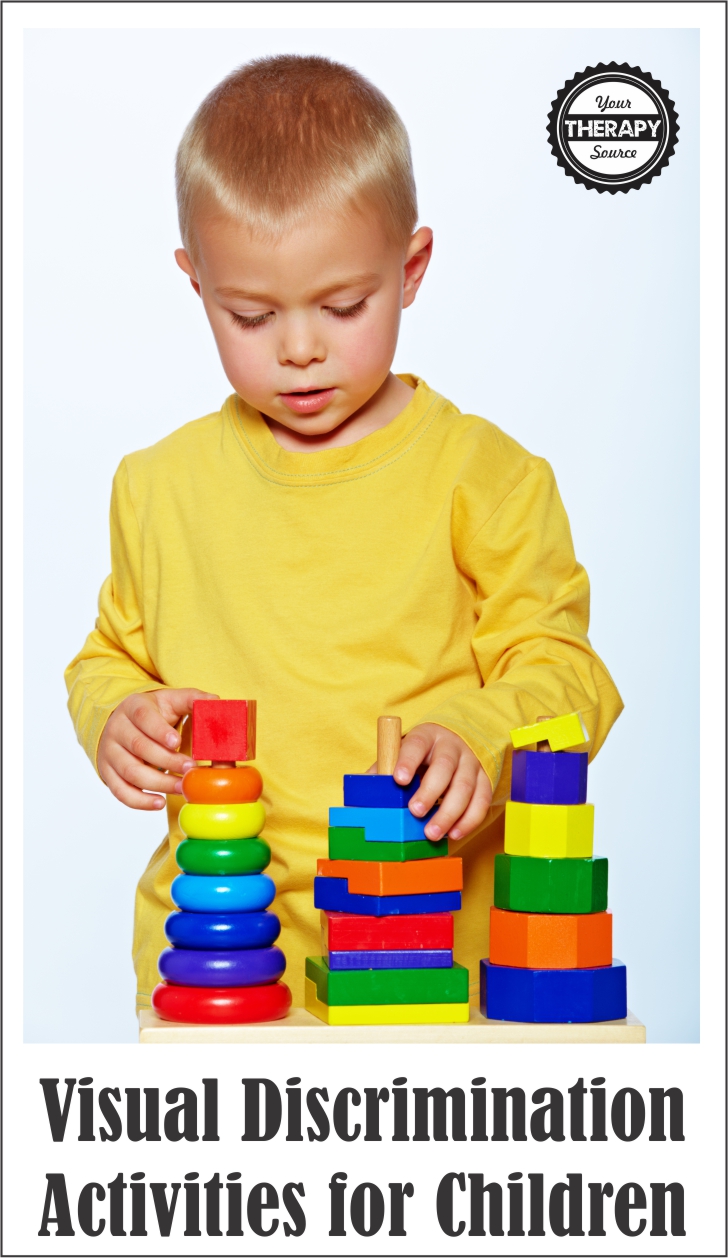Visual Discrimination Activities for Children
Visual discrimination skills involve the ability to determine differences and similarities between objects to help us to understand and interpret the environment around us. Visual discrimination activities are designed to help children improve their ability to see the differences between similar objects. There are many different ways to perform visual discrimination activities, and they can be tailored to meet the needs of any child.
Why Are Visual Discrimination Activities Important?
Visual discrimination are especially important skills when learning reading, writing, and mathematics. We use visual information to make decisions constantly throughout the day, and our visual processing and comprehension of this information is what can make our lives easier or much more difficult.
For example, visual discrimination skills are needed to be able to see the variations and subtle differences between similar looking letters like “b” and “d”, or to compare two different groups of objects and determine how many items are in each. For some children, visual discrimination can be a challenge. Below is an assortment of visual discrimination activities for children that will give them extra practice with these skills.
Using activities that help with visual discrimination can also help to improve a child’s fine motor skills. When children are able to see the differences between similar objects, they can also begin to understand how to manipulate those objects. Working with visual motor integration activities can help to improve a child’s ability to use their hands and fingers in a coordinated way.
Don’t forget that children need adequate visual discrimination skills to function properly in school and at home. If you have concerns about a child’s visual skills, be sure to start out by having the child undergo a thorough vision examination by an optometrist or an ophthalmologist (medical doctor).
Suggested Visual Discrimination Activities:
Here are activity ideas that will help a child to develop visual discrimination skills:
- start with the basics such as sorting for one attribute (i.e. sort cube blocks by color, sort same size
beads by color, sort wooden blocks by size, etc.) - progress to sorting objects with two attributes (i.e. sort different sized blocks by color, sort pens and
pencils, sort objects by shape and color, etc.) - finally advance to sorting objects of many different attributes (i.e. classify by size, color, and shape,
determine differences between letters and numbers) - gather similar objects from around the house such as a yellow crayon, banana, and a black pen. Ask the child
which object does not belong? The answer is the pen since it is not yellow. - sort objects from around the house (i.e. LEGOs by color, size or type, silverware, playing cards, socks, etc.)
match up pictures that are the same (i.e. matching games, memory games) - complete “find the difference” puzzles
- complete puzzles starting with simple one-piece puzzles and progressing to larger puzzles
using a newspaper or magazine, ask the child to go through an article and only circle certain letters or
words (i.e. “the”) - match up parquetry blocks to pattern boards
- play dominoes
- sort coins
- play lotto or bingo with picture cards
- complete puzzles on paper that challenge visual discrimination skills
If you need ideas for pencil and paper visual discrimination puzzles, check out the Visual Discrimination Collection.





